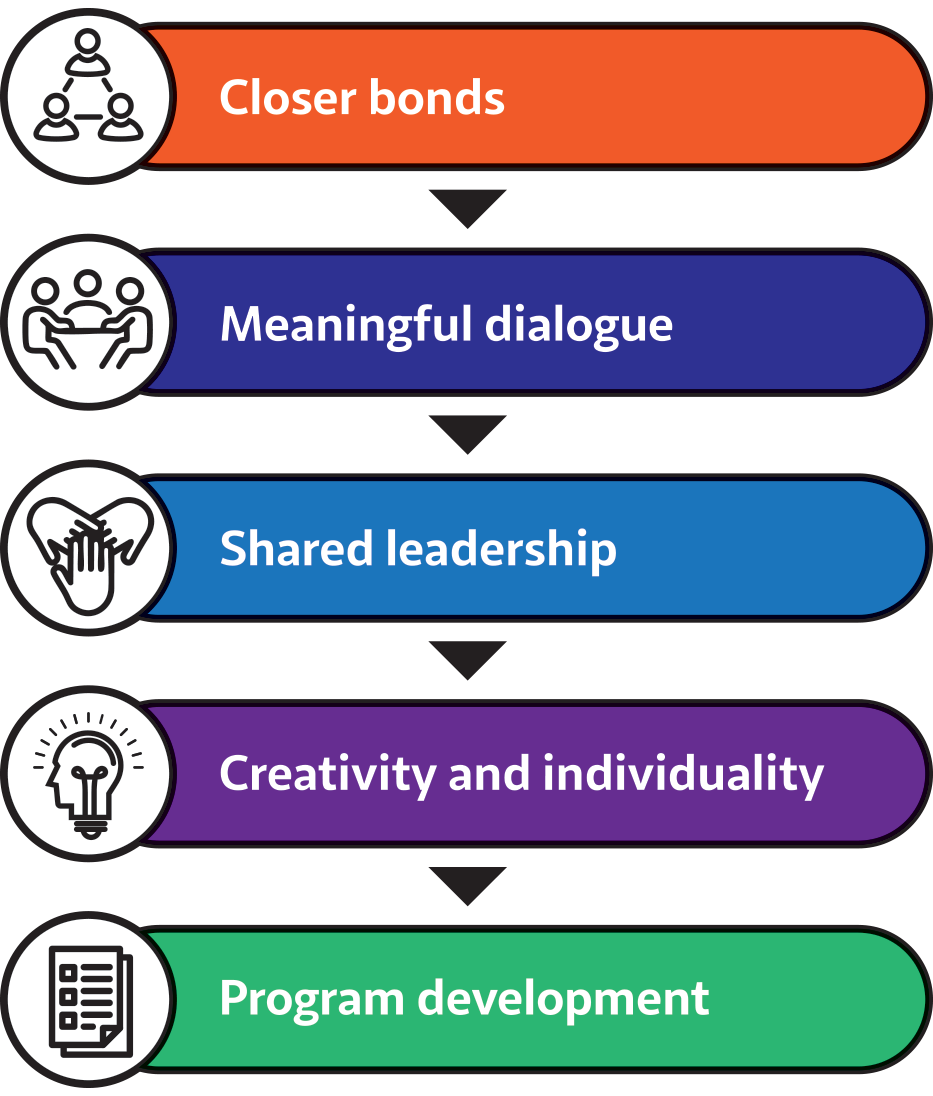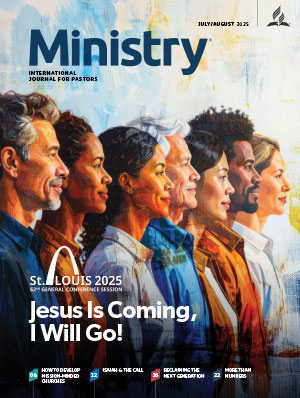While youth are the lifeblood of the church, many congregations lack young members. It raises the question of the church’s future when so many of its youth are no longer actively involved. Research shows that 64 percent of young people in the United States who are 18 to 29 years old and who grew up attending church no longer attend.1 The lack of youth in the church is also a problem worldwide.
Case studies reveal that a “significant numerical decline over the past ten to twenty years and a lack of new members are two prominent symptoms of a very sick church.”2 Today many churches are very ill, and if they do not address their current condition, they will eventually die. Nevertheless, there is still hope. Purposeful action can reverse the current trend in youth attrition.
Diagnosis
Before prescribing treatments for the church’s condition, we must first identify the cause of its illness. A longitudinal study on youth retention in North America, for example, unearthed several factors contributing to the loss of young people in the Seventh-day Adventist Church.3 Irrelevant and uninteresting religious education programs, lack of involvement in church life, lack of opportunities for creative expression, and a sense of disillusionment concerning church doctrines all adversely affect the attitude of youth toward the church.
Young people appreciate stimulating and engaging programs in which they regularly take leading roles.4 Intrinsic religiosity, doctrinal orthodoxy, and having a personal relationship with God all serve to increase their sense of satisfaction and loyalty toward the denomination. Intrinsic religiosity views religion as a worldview that directs a person’s perspective and entire approach to life.5 Such a worldview is particularly important because young people become disenchanted with the church when the older members do not exemplify Christian values in their daily living and when a church lacks intentional plans and attempts to involve youth in its life.6
Prescription
To address the issue of youth retention, we need to (1) strengthen community bonds, (2) discuss church standards, (3) involve youth in leadership, (4) support individuality and creativity, and (5) develop engaging religious programming.

The flowchart above depicts the five components of a youth retention program. Each succeeding piece builds on the previous one, thus creating a new youth-focused culture. Quality relationships allow for more meaningful dialogue in a context where leadership is shared. Youth need to have the freedom to infuse their creativity and individuality in producing engaging programs. We will now explore and expand on each part of the above model.
Foster closer bonds
The first component of our youth retention program focuses on “establishing or strengthening healthy vertical and horizontal relationships.”7 Like the new believers in Acts 2, we must nurture relationships with God and each other (v. 42).
To this end, leaders should conduct a youth retreat annually in which young people can connect with God and each other. Such retreats will celebrate God’s work in their lives and challenge them to build a deeper relationship with God through prayer, Bible study, and service. Participants also engage in relationship-building activities. After the retreat, these relationships should continue to be nurtured during regular youth services.
Additionally, to foster better connections between the youth and the senior members of the church, leaders can assign older members to serve as mentors and prayer partners with the youth. Each young person will then have a senior mentor.
A monthly social activity should also be planned to enable them to know one another better. Such initiatives can help our youth become anchored in Christ, forge closer ties with their peers in the church, and receive the support they need in their Christian walk.
Meaningful dialogue on church doctrines
A stronger relationship with our young members enables us to engage them on church doctrines more effectively. Due to challenges posed by metamodernism and moral relativism, many youth question the core tenets of our faith. The church must offer a safe space for young people to express their doctrinal concerns without judgment. The prevailing view of truth being relative contrasts sharply with the church’s stance on absolute truth, creating a dilemma for our young members immersed in secular ideologies. To address the challenge, the church must foster meaningful dialogue that aims for mutual understanding rather than winning arguments. One of my churches initiated monthly youth rap sessions, inviting experts to discuss various topics. In addition, they sought to help the young people use proper biblical hermeneutics to explore doctrinal questions thoughtfully.
Share leadership
Some leaders have difficulty sharing leadership with persons who lack spiritual maturity or seniority. However, when Jesus chose His team, He selected individuals whom we would consider immature and doctrinally unskilled. Despite their shortcomings, Jesus actively involved them in His mission. Shared leadership builds greater trust and harmony and can decrease discord. By employing the shared leadership approach with His disciples, Jesus trained and empowered them to continue the work He started. His discipleship model allowed Him to retain 11 of His 12 disciples. They then became apostles and led the church from its inception. The same pattern appeared in the founding of the Seventh-day Adventist Church as young people learned to be leaders.
Scripture affirms that youth will play a pivotal role in preparing the world for the imminent return of Jesus. God promises to give visions to His young people who consecrate themselves to Him:
“And afterward,
I will pour out my Spirit on all people.
Your sons and daughters will prophesy,
your old men will dream dreams,
your young men will see visions”
(Joel 2:28, NIV).
Today leaders must involve young people in all aspects of church life. When conducting church elections, we need to include them as church officers. We also need to invite youth to participate in crafting the church’s strategic plan. If we value the voice of our young people, we will ensure they have a seat at the table.
Encourage creativity and individuality
Sharing leadership necessitates giving our youth the latitude to use their creativity and individuality. Creativity is a necessary process for developing new ideas, while innovation focuses on their practical implementation.8 Both creativity and innovation are necessary in problem-solving. In essence we do not simply want to plan for the youth; we want to plan with the youth. Leaders should, therefore, strive to create an environment that supports the free expression of their ideas for programs in the church.
For Global Youth Day I encouraged youth leaders to develop the program for our district outreach initiative. I did not dictate its activities but simply shared the general objectives for the day and gave the young leaders the latitude to plan how they would manage the program. They arranged food distribution in three communities, lunch, and a joint youth session. At the event’s conclusion, many lauded the organizers for the impact their program had on our congregation.
To encourage creativity and individuality, older leaders must consult and collaborate with the youth to solicit their input and participation in designing and executing programs for the church. Such an approach is vital because when we include the youth as necessary change agents, we can implement a “sustainable solution.”9
Create engaging church programs
Finally, listening to and partnering with the youth can improve the quality and relevance of our services. When I interviewed some young members, I learned that several of them did not return to church after the COVID-19 lockdown because the church’s programs did not appear as creative as the ones provided by other churches online. The COVID-19 pandemic helped us to be more aware of the need to create more exciting and innovative programs for all our members and our youth in particular.
To create more engaging services, discover the specific needs of your young people. Then, brainstorm ideas to develop programs driven by those needs. First, solicit as many ideas as possible that address program content and related issues of venue, personnel, promotion, and so on. Then, narrow them down into a program shortlist. Finally, execute those plans and review the effectiveness of each program. As we study them, we need to ensure that we have the resources to help us improve our program delivery.
When implementing such programs, we should vary the venue, personnel, and format to keep the youth interested and involved. As we modify the program design, we must keep in mind that social networks decrease face-to-face contact, therefore diminishing emotional attachment, which counteracts the earlier aim to foster closer bonds.10 So we must prioritize in-person services over virtual ones.
Oversight
Paul admonished the leaders in Ephesus, “Keep watch over yourselves and all the flock of which the Holy Spirit has made you overseers. Be shepherds of the church of God, which he bought with his own blood” (Acts 20:28, NIV). As leaders, we are responsible for the flock for whom Christ died. Each member is of immeasurable value in God’s sight; therefore, we must do everything within our power to nurture and conserve all members, especially the youth of our church. To reclaim the next generation, we must create more tightly knit bonds with them, encourage meaningful dialogue on church doctrines, share leadership with them, facilitate creativity and individuality, and develop more engaging programs.
- “Church Dropouts Have Risen to 64%—But What About Those Who Stay?” Barna, September 4, 2019, https://www.barna.com/research/resilient-disciples/.
- Thom S. Rainer, Autopsy of a Deceased Church + 12 Ways to Keep Yours Alive (Nashville, TN: B&H, 2014), 93.
- Roger L. Dudley and H. Phillip Muthersbaugh, “Social Attachment to the Seventh-day Adventist Church Among Young Adults,” Review of Religious Research 38, no. 1 (September 1996): 38, https://doi.org/10.2307/3512539.
- Chang-Ho C. Ji and Tevita Tameifuna, “Youth Pastor, Youth Ministry, and Youth Attitude Toward the Church,” Review of Religious Research 52, no. 3 (March 2011): 309, https://www.jstor.org/stable/23055554.
- Kevin S. Masters, “Intrinsic Religiousness (Religiosity),” in Encyclopedia of Behavioral Medicine, ed. Marc D. Gellman and J. Rick Turner (New York, NY: Springer, 2013): 1117, 1118, https://doi.org/10.1007/978-1-4419-1005-9_1585.
- Alindo George McCallum, I Want to Stay, Help Me: Over 100 Recommendations for Youth Retention, (Mandeville, Jamaica: Northern Caribbean University Press, 2021), 14.
- Arthur David Canales, “Models for Adolescent Ministry: Exploring Eight Ecumenical Examples,” Religious Education 101, no. 2 (Spring 2006): 220, https://doi.org/10.1080/00344080600640202.
- Yijing Huang, Fernando A. F. Ferreira, and Zheng He, “Impact of Workspace Environment on Creativity and Innovation: Empirical Evidence From a Makerspace in China,” R&D Management 53, no. 4 (September 2023): 620, https://doi.org/10.1111/radm.12504.
- Nina Vasan and Jennifer Przybylo, Do Good Well: Your Guide to Leadership, Action, and Social Innovation (San Francisco, CA: Jossey-Bass, 2013), 146.
- Marissa King, Social Chemistry: Decoding the Patterns of Human Connection (New York, NY: Dutton, 2020), 59.












